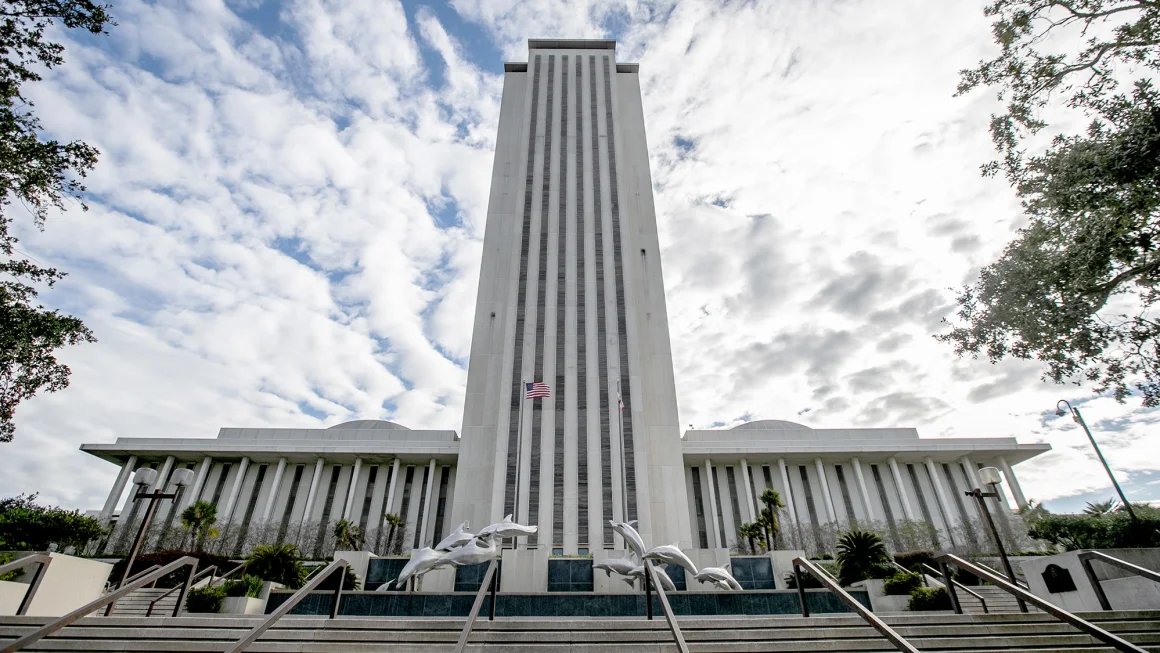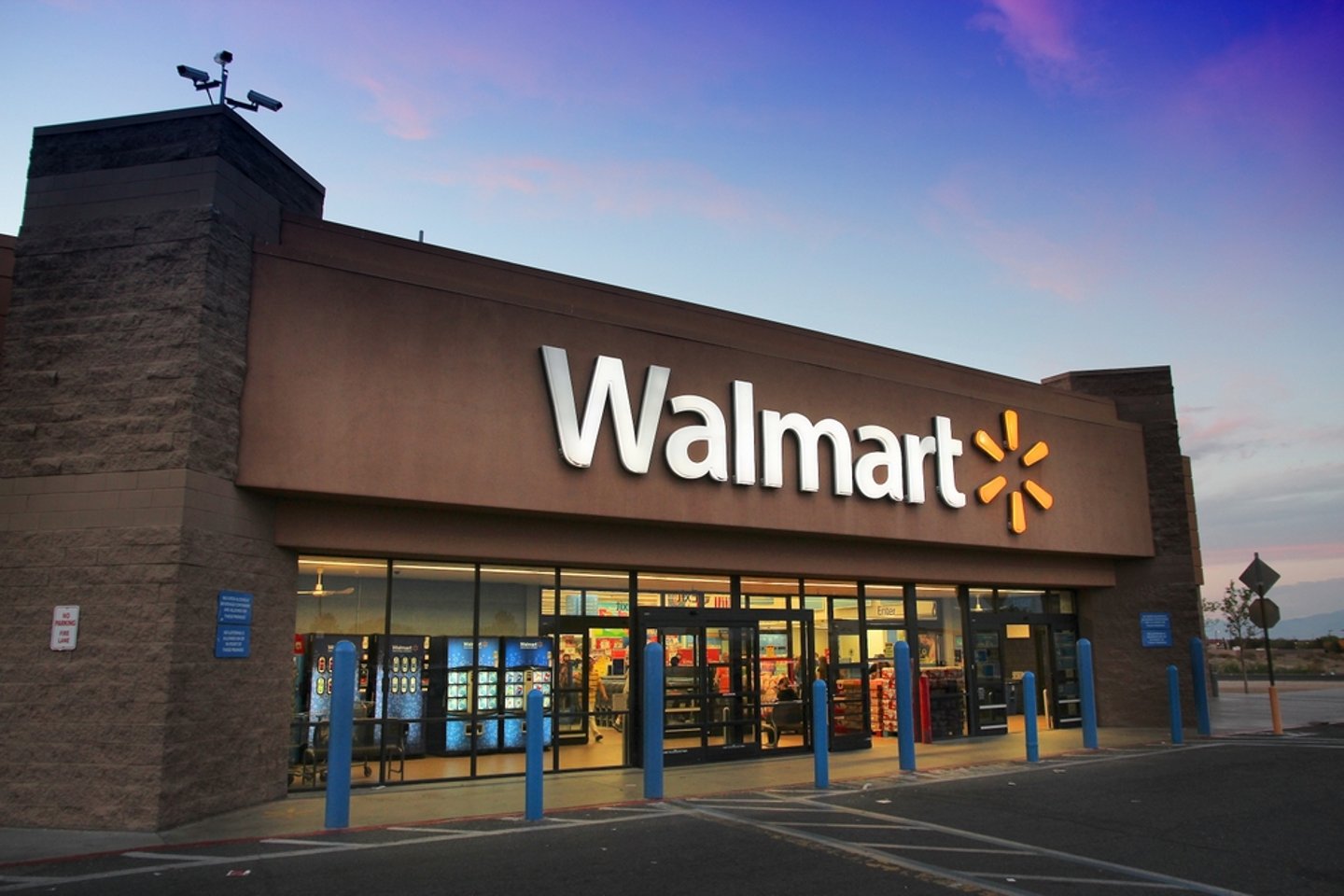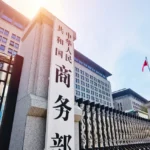Explore the booming real estate market in Bangladesh, driven by urbanization, a growing middle class, and significant expatriate remittances. This article delves into the factors fueling the sector’s growth, including key infrastructure projects, emerging demands for premium properties, and the challenges facing the industry. With a promising outlook amidst ongoing economic changes, understand the dynamics shaping Bangladesh’s real estate landscape and how it serves as a cornerstone for the country’s economic development.
Bangladesh’s real estate sector is undergoing an unprecedented boom, driven by rapid urbanization, a burgeoning middle class, significant expatriate remittances, and transformative infrastructure projects. This growth is reshaping the country’s urban landscape, particularly in cities like Dhaka and Chattogram, and is emerging as a cornerstone of Bangladesh’s economic development. With a market value projected to reach US$2.75 trillion by 2024, the real estate sector is not only meeting the growing demand for housing but also contributing significantly to the nation’s GDP and employment.
Urbanization: The Catalyst for Growth
Bangladesh’s urbanization rate stands at 38.5%, with millions migrating from rural to urban areas in search of better opportunities. Cities like Dhaka and Chattogram are witnessing a surge in population density, creating an urgent need for housing and commercial spaces. This urban influx has necessitated the development of modern infrastructure, including roads, utilities, and public transportation, further fueling the demand for planned real estate projects. As urban centers expand, the real estate sector is stepping up to provide solutions that cater to both residential and commercial needs.
The Rising Middle Class: A Driving Force
The middle class, now comprising over 30% of Bangladesh’s population, is a key driver of the real estate boom. With increasing disposable incomes, this demographic is investing in property not only for living but also as a secure financial asset. The shift from traditional savings to real estate investments reflects a growing confidence in the sector’s potential for long-term returns. This trend is particularly evident in the demand for premium apartments and gated communities, which are becoming symbols of upward mobility and financial security.
Expatriate Remittances: Fueling High-Value Investments
Expatriates, particularly non-resident Bangladeshis (NRBs), play a pivotal role in the real estate market. In 2023, NRBs accounted for approximately 20% of high-value property purchases, with a strong preference for luxury apartments in major cities. Their remittances are not only supporting families back home but also channeling significant capital into the real estate sector. This influx of foreign investment is helping to elevate the quality of housing and infrastructure, making cities like Dhaka more attractive to both local and international buyers.
Infrastructure Development: A Game-Changer
Major infrastructure projects, such as the Padma Bridge, Dhaka Metro Rail, and extensive road network expansions, are transforming the real estate landscape. These projects are enhancing connectivity and accessibility, boosting property values in surrounding areas, and attracting both individual and institutional investors. For instance, the Padma Bridge has opened up new opportunities for development in the southern regions of the country, while the Dhaka Metro Rail is expected to ease traffic congestion and increase the appeal of suburban areas.
Emerging Trends: Adapting to New Demands
The real estate sector is evolving to meet changing consumer preferences. Post-pandemic, there has been a surge in demand for studio apartments, which offer compact, functional living spaces ideal for young professionals and small families. Additionally, steel structure buildings are gaining popularity due to their durability, safety, and quick construction times. The sector is also embracing digital transformation, with companies offering virtual tours and online portfolios to help buyers make informed decisions.
Challenges and Opportunities
Despite the sector’s growth, challenges remain. The rising cost of construction materials, regulatory hurdles, and the need for more affordable housing solutions are pressing concerns. However, these challenges also present opportunities for innovation and collaboration. Developers are increasingly focusing on sustainable and cost-effective construction methods, while the government is working to streamline regulations and incentivize investment.
Economic Impact: A Pillar of Growth
The real estate sector is a significant contributor to Bangladesh’s economy, accounting for 12% of GDP and generating approximately Tk. 20 billion in annual sales. It also provides employment for over 2 million people, including architects, engineers, and laborers. The sector’s growth has led to increased tax revenues, with the government collecting Tk. 2 billion annually from real estate transactions. This financial contribution underscores the sector’s importance as a pillar of economic growth.
The real estate market in Bangladesh has witnessed a rapid transformation, emerging as a cornerstone of the nation’s economic growth. Over the past few years, this sector has captured the interest of both local and international investors, catalyzing significant capital inflow and creating myriad opportunities. The current state of the real estate market is indicative of broader economic trends, characterized by increasing urbanization, a burgeoning middle class, and substantial infrastructure development.
Urbanization has played a pivotal role in the real estate boom, with an ever-growing population migrating to cities in search of better employment and living conditions. According to recent statistics, Bangladesh’s urban population is projected to reach nearly half of the total population by 2050, creating unprecedented demand for housing and commercial spaces. This surge in urban migration directly correlates to increased investments in residential and commercial real estate, fueled by the need for modern amenities and infrastructure.
Additionally, the expanding middle class in Bangladesh has significantly influenced the demand for real estate. As people’s disposable income rises, so does their ability to purchase homes, making the real estate market more competitive. Developers are now more attuned to the preferences of this demographic, focusing on affordable yet modern housing solutions, which have become increasingly popular among first-time buyers.
Furthermore, expatriate remittances continue to play a crucial role in the real estate sector. Many Bangladeshis working abroad invest their savings in residential properties back home. Such investments not only contribute to the market’s vitality but also bolster the overall economy through increased consumption and development.
In conclusion, the real estate market in Bangladesh is thriving, driven by various factors, including urbanization, a growing middle class, and influxes of remittances. These dynamics present a promising outlook for future growth, establishing the sector as a key player in the country’s economic trajectory.
Factors Driving Urbanization in Bangladesh
The urbanization of Bangladesh has become a remarkable phenomenon, significantly influencing the real estate market within the country. Over the past few decades, Bangladesh has witnessed a persistent migration trend as individuals and families move from rural areas to cities in search of better opportunities. This shift is largely motivated by the pursuit of employment, education, and healthcare facilities that urban centers offer, contributing to a dramatic increase in urban population density.
According to recent statistics, the urban population in Bangladesh is projected to reach approximately 50 million by 2030, up from around 38 million in 2020. This rapid influx of people into cities has created a pressing demand for housing, commercial spaces, and infrastructural development. As the urban areas expand to accommodate the growing population, the real estate market has responded by diversifying its offerings to meet varying needs, including affordable housing solutions, luxury condominiums, and commercial real estate projects.
The demographic shift also plays a crucial role in shaping consumer preferences and housing demands. The younger population, particularly millennials and Gen Z, is increasingly inclined toward urban living arrangements that offer connectivity and access to modern amenities. This trend has catalyzed a surge in the development of housing projects that focus on sustainability, innovation, and community engagement, further boosting the real estate market.
Additionally, strategic infrastructural advancements, including roads, bridges, and transportation systems, have facilitated easier commuting. The government’s investment in urban development initiatives is pivotal, enhancing accessibility to urban centers and driving further migration. As cities become more vibrant hubs of economic activity, the interconnected growth of these urban areas ignites a continuous cycle of urbanization and real estate development. The nexus between urbanization and the real estate market in Bangladesh is a testament to the evolving socio-economic landscape of the nation.
The Rise of the Middle Class
The burgeoning middle class in Bangladesh represents a significant demographic shift that is reshaping the real estate market. With the country experiencing impressive economic growth over the past few decades, various economic factors have played a pivotal role in elevating the standard of living for many citizens. A notable increase in job opportunities across sectors, combined with consistent economic improvements, has contributed to a rise in disposable income among the population. This newfound financial health enables a larger segment of the population to seek home ownership, thereby intensifying the demand for residential properties.
As the middle class continues to expand, their preferences in housing are evolving as well. Traditionally, many families prioritized simple dwelling types, often located in rural or semi-urban areas. However, with this demographic shift, there is now an increasing interest in urban living and modern amenities. The prospect of improved infrastructure in metropolitan areas, such as better transportation systems and access to essential services, has made city life more appealing. Consequently, urban housing projects have seen a surge in demand, creating both challenges and opportunities in the real estate market.
Moreover, this emerging middle class is characterized by changing lifestyles and aspirations. Young professionals and families are now looking for properties that not only meet their basic needs but also reflect their tastes and preferences. This shift is prompting developers to create diverse offerings, from apartments in high-rise buildings to gated communities that provide a sense of security and exclusivity. Consequently, the real estate market in Bangladesh is experiencing a transformation, driven by the middle class’s capacity to invest in properties that accommodate their aspirations.
Thus, the implications of a rising middle class on the housing sector are profound. With an increased demand for contemporary and well-located properties, the real estate market is poised for continued growth as it aligns itself with the evolving needs of this influential demographic.
Expatriate Remittances: Fueling Investments
In recent years, expatriate remittances have emerged as a pivotal factor in the booming real estate market of Bangladesh. Many Bangladeshi expatriates, working abroad in various countries, consistently send significant amounts of money back home. These financial inflows not only support their families but also play a crucial role in stimulating investment in the local property market. The remittances serve as a reliable source of income that enables families to purchase, build, or renovate homes, thus directly contributing to the thriving real estate sector.
Investments by expatriates often lead to increased demand for housing, driving up property prices and encouraging real estate development. As these individuals seek to secure their financial future and bolster their family’s stability, many choose to invest in residential and commercial properties across Bangladesh. This trend has been particularly noticeable in urban areas, where job opportunities and infrastructure development attract not just expatriates but also domestic migrants. Consequently, the influx of remittances has become a catalyst for various real estate ventures, including luxury apartments, housing complexes, and retail spaces.
Moreover, the impact of expatriate remittances extends beyond mere property transactions. These funds boost local economies by creating job opportunities in construction and associated industries, resulting in an overall uplift in community standards. As the real estate market expands, it facilitates a diverse range of businesses, which underpins economic growth at multiple levels. Thus, the robust connection between Bangladeshi expatriates’ remittances and the real estate market illustrates how international financial contributions can enhance local stability and prosperity. In conclusion, expatriate investments form a critical component of the strategy to fuel the ongoing growth in Bangladesh’s real estate sector.
Key Infrastructure Projects and Their Impact
The real estate market in Bangladesh has seen significant growth in recent years, largely influenced by major infrastructure projects that enhance connectivity and stimulate economic activities. One of the most prominent projects is the Padma Bridge, which connects the southern part of the country to the capital, Dhaka. This landmark infrastructure not only reduces travel time but also facilitates trade and commerce between regions, thereby creating a conducive environment for real estate development.
In addition to the Padma Bridge, several road and highway expansions are being undertaken, further improving access to urban centers. These projects are critical in reshaping the real estate landscape, as they make previously inaccessible areas more attractive for residential and commercial investments. As connectivity improves, real estate developers are increasingly inclined to explore these emerging markets, leading to a surge in new housing projects, shopping malls, and office spaces.
The impact of these infrastructure initiatives extends beyond mere connectivity; they are catalysts for economic growth. The influx of businesses into newly accessible areas creates job opportunities, which in turn fuels demand for housing and commercial properties. Consequently, the real estate market in Bangladesh is witnessing an upward shift toward urbanization, with populations moving towards cities that are now within reach thanks to these infrastructural advancements.
Moreover, government investments in infrastructure encourage private sector participation, stimulating a competitive environment that further drives real estate development. This partnership is vital in addressing the housing gap and ensuring sustainable urban growth. As a result, the ongoing construction projects play a pivotal role in positioning Bangladesh’s real estate market as a cornerstone of economic progress. Businesses and individuals alike are looking forward to the potential these projects promise, marking an exciting chapter in the country’s development narrative.
Demand for Premium Properties
In recent years, the real estate market in Bangladesh has witnessed a significant shift, particularly in the demand for premium properties. Major cities like Dhaka and Chattogram have become epicenters for luxury living, drawing attention from both local and international investors. This increasing interest can be attributed to several factors, including lifestyle changes among the urban population, heightened competition among developers, and a growing focus on quality living environments.
The urban landscape of Bangladesh is evolving, with an escalating number of affluent individuals seeking upscale residences that offer more than just basic amenities. Premium properties are now characterized by state-of-the-art facilities, modern architecture, and eco-friendly designs, catering to a clientele that values comfort and prestige. High-rise apartments, luxury villas, and gated communities are increasingly popular, providing a blend of security, exclusivity, and community living.
Additionally, the real estate market is witnessing intensified competition among developers who are eager to meet the growing demand for premium housing. This competitive landscape encourages innovation in design and construction, resulting in more attractive offerings for potential buyers. Developers are now focusing on creating holistic living spaces that encompass sports facilities, parks, and retail areas, thus enhancing the overall quality of life for residents.
Another compelling factor driving the interest in premium properties is the changing aspirations of the Bangladeshi population. As the country experiences economic growth and a burgeoning middle class, many individuals are re-evaluating their living situations and prioritizing high-quality environments that align with their lifestyle choices. This trend is likely to continue as more people move into urban centers in search of promising opportunities and a better quality of life.
In conclusion, the rising demand for premium properties in Bangladesh’s major cities underscores a shift towards a more sophisticated real estate market. It reflects both the aspirations of an evolving populace and the strategic innovations of developers aim to meet these new expectations.
Challenges Facing the Real Estate Sector
The real estate market in Bangladesh has been experiencing considerable growth, yet this expansion is not without its challenges. One of the most significant challenges faced by stakeholders involves regulatory hurdles. The complex regulatory framework governing land use, development approvals, and construction permits often leads to delays and increased costs. These bureaucratic obstacles can deter both local investors and foreign stakeholders, who may be dissuaded by the slow pace of project approvals and the potential for corruption within the system. Streamlining regulatory processes and improving transparency are crucial for fostering a more attractive investment climate.
Another pressing concern in the burgeoning real estate market is sustainability. As urbanization accelerates, the demand for housing and commercial space is intensifying. This rapid growth often comes at the expense of environmental considerations. Issues such as uncontrolled land development, deforestation, and inadequate waste management pose serious risks to ecological balance. Developers and investors must adopt sustainable practices to mitigate these impacts, such as integrating green building technologies and maintaining urban planning best practices that respect and preserve the environment.
Infrastructure bottlenecks also pose a significant challenge to the real estate sector. In Bangladesh, many areas suffer from inadequate transportation, water supply, and electricity facilities, which can hinder real estate development. Improved infrastructure investment is essential to support the burgeoning housing demand and to enhance property values. Public-private partnerships could be an effective strategy to address these shortcomings, driving the development of necessary infrastructure alongside real estate projects.
Lastly, fluctuations in the broader economy can dramatically affect property investments. Economic downturns typically lead to reduced incomes and tighter credit conditions, resulting in decreased purchasing power among potential buyers. Developers need to adopt flexible strategies and diversify their portfolios to weather these economic changes while maximizing profitability in the real estate market of Bangladesh.
The Future of Real Estate in Bangladesh
The future of the real estate market in Bangladesh appears promising, buoyed by a combination of demographic trends, urbanization, and economic growth. As the population continues to shift towards urban centers, the demand for residential and commercial properties is anticipated to rise significantly. According to several industry experts, this trend is likely to be compounded by a burgeoning middle-class population, which is expected to enhance purchasing power and increase the appetite for real estate investment.
Furthermore, the government’s initiatives aimed at improving infrastructure and transportation networks will likely play a pivotal role in shaping the real estate landscape. Projects such as the Dhaka Metro Rail and other road development plans are expected to facilitate easier access to various areas, thus creating new opportunities for developers in previously underdeveloped regions. This infrastructure growth not only makes real estate investments more attractive but also paves the way for further urban development and investment potential.
In addition, potential areas for growth extend to green building initiatives and sustainable housing. As awareness regarding environmental issues increases, there is a growing interest among developers and buyers in eco-friendly constructions. Real estate projects that incorporate sustainable practices are likely to gain traction, influencing market dynamics significantly.
However, challenges such as regulatory hurdles, land acquisition issues, and economic volatility present potential obstacles to sustained growth. It is critical for stakeholders in the property sector to navigate these challenges effectively to unleash the full potential of the real estate market in Bangladesh. As such, proactive economic policies and regulatory reforms will be essential to cultivate a responsive real estate environment that aligns with both current needs and future aspirations.
In conclusion, the real estate market in Bangladesh is on an upward trajectory, driven by urbanization, economic improvements, and evolving consumer preferences. With careful planning and strategic investment, the landscape has the potential to flourish over the coming years, solidifying its role as a cornerstone of the nation’s economic development.
Real Estate as a Pillar of Economic Development
In recent years, the real estate market in Bangladesh has undergone remarkable growth, positioning itself as a cornerstone of the country’s economic development. The sector has not only contributed significantly to GDP but has also created numerous job opportunities, leading to an overall uplift in living standards. The influx of both local and foreign investments into the real estate market has been instrumental in stimulating various related sectors such as construction, materials supply, and services, further solidifying its role in the economic framework of Bangladesh.
This expansion can be attributed to various factors, including urbanization and increasing demand for housing. As cities expand and populations grow, the need for residential and commercial spaces has surged, prompting developers to launch new projects. Moreover, governmental initiatives aimed at promoting real estate development through fiscal incentives and favorable policies have also played a pivotal role in fostering a conducive environment for investors. However, while the outlook seems promising, challenges remain that could impede sustainable growth.
To maintain the momentum of the real estate sector, it is essential that stakeholders including the government, private developers, and financial institutions collaborate effectively. This partnership must focus on addressing key challenges such as regulatory hurdles, infrastructural bottlenecks, and ensuring affordability in housing. Furthermore, long-term planning and investment in infrastructure are critical components that will support the continued evolution of the real estate market in Bangladesh. By harnessing the potential of this sector, Bangladesh can lay the groundwork for robust economic development well into the future.
The Evolution of Bangladesh’s Real Estate Industry
Bangladesh’s real estate sector traces its origins back to 1964 with the establishment of Eastern Housing Limited (EHL), the country’s first real estate company. That same year, EHL launched Bangladesh’s inaugural real estate housing project in Pallabi, Mirpur, Dhaka. The industry began to gain momentum in the 1970s, fueled by rapid economic growth, rising demand for housing, and the emergence of a growing middle class. By 1988, the number of real estate developers had surged from just 5 in 1980 to 42, marking a significant expansion in the sector.
However, the industry faced its first major setback during the economic recession of 1990–1992, triggered by political changes and a decline in investor confidence. In response, the Real Estate Housing Association of Bangladesh (REHAB) was formed in 1991 to standardize industry practices and restore consumer trust. Despite these challenges, the real estate sector continued to play a vital role in the economy, providing millions with opportunities for homeownership and rental accommodations.
The early 2000s saw a resurgence in the real estate market, with a surge in investments and housing supply between 2004 and 2006. However, this growth was short-lived, as the sector experienced another downturn from 2006 to 2008 due to socio-political instability, forcing many new realtors to exit the market. A brief recovery occurred between 2009 and 2011, but the industry faced yet another slump in 2012, exacerbated by political unrest in 2013. During this period, many real estate companies struggled to attract buyers, even after reducing apartment prices, and numerous clients canceled bookings due to financial difficulties.
Despite these challenges, the real estate sector remained a key contributor to Bangladesh’s economy. In the 2014 fiscal year, it accounted for approximately 7.08% of the country’s GDP, with its combined contribution reaching 12% when including linked industries. The situation began to stabilize in 2016, and by 2018, the government introduced initiatives to revitalize the sector, such as offering home loans to government employees at a 5% interest rate and reducing property registration costs in 2019. These measures spurred a positive trend, with the sector contributing 7.8% to GDP in 2019, amounting to BDT 1.415 trillion.
In 2020, the real estate market was valued at BDT 50,000 crore, capturing 15–17% of the market share. By 2021, demand surged, with investments totaling BDT 1,50,000 crore and over 10,000 flats sold — the highest number in the sector’s history. That year, real estate contributed around 8% to GDP and employed 3.5 million people.
As of 2023, the industry continues to grow, albeit facing challenges such as limited land availability. It contributed 7.93% to GDP in the fiscal year 2023, underscoring its importance to the national economy.
Dhaka’s Real Estate Market
Dhaka’s real estate market has seen exponential growth over the decades. In 1975, a one-katha plot of land in Gulshan cost BDT 25,000 ($1,800). By 1990, the price had risen to nearly BDT 100,000 ($2,900), and by 2020, it skyrocketed to BDT 50 million ($590,000). Similar trends were observed in other prime areas like Dhanmondi, Shantinagar, and Uttara, though at a slower pace. According to the Institute for Planning and Development, land prices in Dhaka surged by 2,740% between 2000 and 2021, while flat prices increased by 716%. This dramatic rise has been attributed to inadequate city planning, ineffective regulations, and insufficient government initiatives to ensure affordable housing for all.
In summary, Bangladesh’s real estate industry has experienced both remarkable growth and significant challenges over the decades. Despite periodic downturns, it remains a cornerstone of the economy, driven by urbanization, rising demand, and government interventions. However, addressing issues like land scarcity and regulatory inefficiencies will be crucial for sustaining its growth in the future.
Top Real Estate Companies
The success of Bangladesh’s real estate sector can be attributed to the contributions of several leading companies. These include:
- Concord Real Estate ltd.
- Shanta Holdings ltd.
- building technology & ideas ltd. (bti)
- Bay Developments ltd.
- Navana Real Estate ltd.
- Anwar Landmark ltd.
- Credence Housing Limited
- Asset Developments & Holdings ltd.
- Urban Design & Development Ltd
- JCX Developments Ltd
- Unimass Holdings Ltd
- Sheltech (Pvt.) Ltd.
- Edison Real Estate
These companies have set high standards in construction quality, design innovation, and customer service, earning the trust of buyers and investors alike.
Conclusion
Bangladesh’s real estate market is more than just a booming industry — it is a cornerstone of the nation’s economic progress. By addressing the challenges and capitalizing on the opportunities, the sector can continue to drive growth, create jobs, and improve the quality of life for millions. As urbanization accelerates and infrastructure projects reshape the landscape, the real estate sector is poised to play an even greater role in shaping Bangladesh’s future. For investors, developers, and policymakers alike, the message is clear: the time to act is now. The real estate boom is not just a trend; it is a transformative force that will define Bangladesh’s economic trajectory for years to come.
Sources:
- https://www.statista.com/outlook/fmo/real-estate/bangladesh
- https://www.tbsnews.net/economy/industry/dull-time-real-estate-bangladesh-thriving-859556
- https://ngital.com/bangladesh-social-media-trends-2025/
- https://ngital.com/top-real-estate-companies-in-bangladesh/
- https://www.linkedin.com/pulse/current-real-estate-market-bangladesh-trends-growth-future-islam-bq5uc/
- https://www.thedailystar.net/supplements/your-property-guru/news/outlook-real-estate-scenario-bangladesh-3847596
- https://www.dhakatribune.com/business/324095/transformative-landscape-of-bangladesh-s-real














